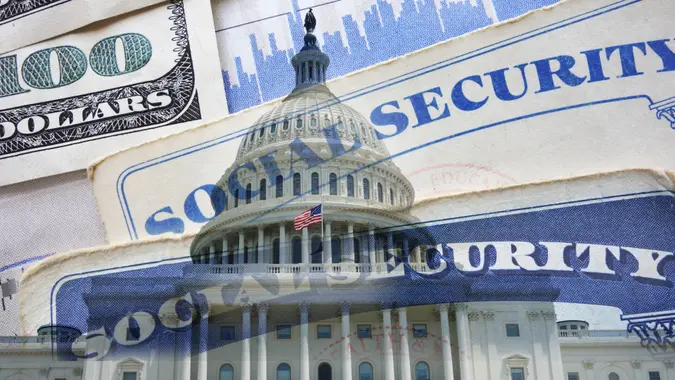Social Security 2025: 4 Things To Know So You Can Plan Your Housing Budget

Commitment to Our Readers
GOBankingRates' editorial team is committed to bringing you unbiased reviews and information. We use data-driven methodologies to evaluate financial products and services - our reviews and ratings are not influenced by advertisers. You can read more about our editorial guidelines and our products and services review methodology.

20 Years
Helping You Live Richer

Reviewed
by Experts

Trusted by
Millions of Readers
The more that you rely on Social Security, the more you’ll have to be mindful of your budget. With retired workers earning just $1,921.56 in average monthly benefits, paying for housing can become a big concern unless they have significant additional retirement resources.
Although the annual cost-of-living update provided by the Social Security Administration can help seniors battle rising costs, it’s often not enough to keep up with the actual expenses that retirees have to pay, particularly when it comes to housing. But being forewarned is forearmed. Learning about the Social Security COLA and expected rental and home pricing in 2025 can help retirees plan their housing budgets better. Here’s how.
Social Security Cost-of-Living Adjustment for 2025
Every year, the Social Security Administration adjusts benefit payments based on changes in the CPI-W, which is the Consumer Price Index for Urban Wage Earners and Clerical Workers. While similar to the widely known Consumer Price Index, or CPI, it measures slightly different variables and so may vary from the more often-quoted CPI inflation number.
For 2025, the Social Security COLA will be 2.5%, smaller than the last three years but bigger than any increase from 2013 through 2021. This means the average retired worker may see their benefit rise from around $1,920 per month to $1,968 (this is just an average — not an accurate reflection of everyone’s benefit amount).
Anticipated Rental Price Increases
Every year, the U.S. Department of Housing and Urban Development releases so-called “fair market rents” as a baseline for various housing programs. But it’s also a good projection of increases in rental prices for the coming year.
For 2025, the HUD FMRs are increasing by only 4%, as opposed to gains of 10% each in 2024 and 2023. Additionally, in 2024, 99% of areas showed a price increase, while in 2025, it’s estimated that 20% of areas will actually show a decrease in pricing. For example, the New York HUD Metro FMR area will show a 6.3% decrease in 2025.
Retirees can use HUD data to prepare for any potential rental price increases or even to consider moving to a less-pricey area to stretch their housing budgets in 2025.
Projected Home Value Appreciation
Home value appreciation can work two ways for retirees. For those that own their homes, rising prices are a good thing, as it increases their net worth and allows them flexibility when it comes to tapping the equity in their homes. But for those looking to buy, increases in home prices are a huge negative, making an already unaffordable housing market even more out of reach.
For 2025, experts anticipate more modest pricing gains than in 2024, with some markets actually declining. The National Association of Realtors sees a 2% home price gain in 2025, while Fannie Mae anticipates a 3% year-over-year increase. The Mortgage Bankers Association sees homes rising somewhere in the middle, up about 2.7% in 2025.
Ways To Modify Your Budget To Afford Housing
Housing is often the single largest part of an American’s budget. If your housing cost is variable, such as if you rent from year to year or if you have an adjustable-rate mortgage, your annual expenses will likely continue to increase. While the Social Security COLA can help mitigate this increase, housing costs will often exceed the amount of the COLA.
There are a few ways seniors can handle this situation and still keep their retirement budget intact. The absolute best way, of course, is to own a home outright with no remaining mortgage. But while some seniors are in that enviable position, the truth is that many still carry a mortgage into retirement. In that scenario, a fixed-rate mortgage is the best way to avoid annual payment increases.
For renters, the best options are to live in a low-cost area, where price increases aren’t as damaging, or to have long-term rent control. This can be accomplished either through local legislative action, which limits price increases, or sometimes through landlords themselves, some of whom prefer to keep rent steady for long-term renters.
 Written by
Written by  Edited by
Edited by 
























